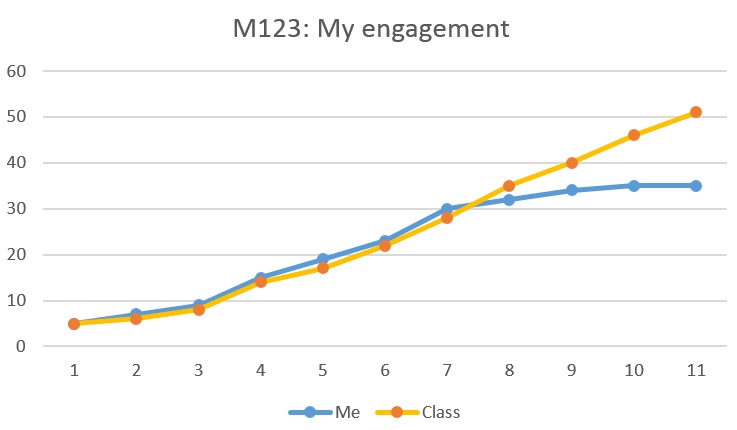 Many applications for learning analytics have been proposed, are under development or are already being deployed by institutions. These range from prompting staff to intervene with students at risk of drop-out to attempting to understand whether some learning content or activity is effective.
Many applications for learning analytics have been proposed, are under development or are already being deployed by institutions. These range from prompting staff to intervene with students at risk of drop-out to attempting to understand whether some learning content or activity is effective.
Much of this is about providing better information to staff about students and their learning. But if learning analytics is primarily about enhancing students’ learning shouldn’t we be putting analytics in the hands of the learners themselves? This was the conclusion that participants at the co-design workshop back in the summer came to.
Jisc has recently begun the procurement process to commission a range of basic learning analytics services for UK further and higher education. One of these services is the provision of a student app, taking its data primarily from a learning analytics warehouse which in turn is likely to source data from VLEs (LMSs), student information systems and elsewhere.
Jisc is hosting an event in February where we’ll bring together people from universities and colleges across the UK to look at what they think can and should be provided to students directly. The requirements gathering process will find out from students directly what analytics services they would be most interested in having at their fingertips on a smartphone or tablet. Here are some initial thoughts about what might crop up:
Measuring engagement
Students might find visualisation of their participation in a course of use, measured through a variety of metrics such as VLE access, campus attendance and library use. Comparisons with peers may be helpful. And comparisons with previous cohorts, showing the profile of a successful student might be useful too. These could be presented in a variety of ways, including graphs of engagement over time compared with others. Learners might want to have alerts sent to their device through the app if their participation shows they’re falling below an acceptable level.
Measuring assessment performance
There is clearly a need to show details of assessments already completed and grades obtained, and the dates, locations and requirements of impending ones. Assessment events transferred to your calendar with advance alerts could also be useful. But arguably this is simple reporting and alerting functionality and not learning analytics. A progress bar showing how you are progressing through your module and qualification might be helpful. Otherwise assessment data could feed into one of the metrics used for measuring engagement.
Module choice
One application of learning analytics is to assist students in making module choices. Analytics can recommend modules where you are most likely to succeed, comparing your profile with those of previous students and presenting you with information such as “Students with similar profiles to you have tended to perform better when selecting xxx as their next module”.
Issues
The above proposed functionality comes with ethical questions, such as: Could an app showing you’re falling behind and likely to fail a module be de-motivational and act as a self-fulfilling prophecy? And the module choice example is of course highly dependent on the sophistication of the algorithm, and potentially restricts free choice. I’ve discussed these and many other ethical issues in a recently-published literature review which is the precursor to a Code of Practice for learning analytics which Jisc is co-developing with the sector.
Another issue is whether it makes sense from the student’s point of view to separate an analytics app from other student-facing functionality. Apps containing details of transport, campus maps, your next lecture, computer availability in the library and much else that is digitised on campus are already available to students in many institutions. Having a separate analytics app might be inconvenient. On the other hand mobile apps tend to have a limited amount of functionality compared with traditional full-scale PC applications. An app for monitoring your learning might make sense in its own right.
A student-facing app may make learning analytics more tangible and show people the possibilities of using all that data being accumulated to benefit students directly. I’ve only scratched the surface of what’s possible in the suggestions above. The event planned for February has already had a large amount of interest from the sector and we’re looking forward to gathering innovative suggestions from staff and students across the UK to be built into the Jisc app. Stay tuned to this blog for updates on progress.

